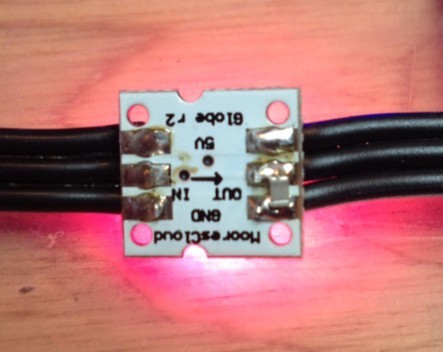How to prepare to manufacture hardware – StartupSmart

Drawing from our experience bringing Holiday by MooresCloud to market, this series covers the whole journey: concept to design, preparation for mass production, compliance testing, manufacturing, and what to do when things break down – because they will break down.
Part Two: Preparation for manufacturing
A completed product design becomes the starting point for the manufacturing process. Two documents flow naturally from this design: the ‘bill of materials’ (or BOM) exhaustively lists all of the components required to assemble the product; while mechanical drawings define the form of the components and their assembly into a product.
Both of these documents will be treated as fixed and immutable. In truth, neither is. The best product design can never be more than an approximation of the final product. Just as no battle plan survives an encounter with the enemy, no product design makes it through a manufacturing process unchanged.
Manufacturing process design
Manufacturing is a series of repeatable processes. These processes must be meticulously developed from the product design. Although those processes are implicit in the design, nothing about manufacturing is implicit. Everything must be specified clearly, quantifiably and repeatably.
Manufacturing process design is time-consuming, expensive, and requires great attention to detail. Many startups don’t factor it into their plans, believing they can email the product design to the factory, and the rest will fall into place.
Selecting a manufacturing partner
Unless you’re building your own production line, you’ll need a manufacturing partner, most likely drawn from one of the multitude of factories in China’s Shenzhen Special Economic Zone, just over the border from Hong Kong. With tens of thousands of options, how do you identify a manufacturer who will be diligent, attentive, responsive, and flexible? These qualities make a big difference when things go awry.
Many hardware startups send their BOM and mechanical designs to a swath of factories, winnowing through the bids. A good quote does not mean a good manufacturer. This is where either a site visit or personal connection becomes essential.
In this respect, MooresCloud was well served by Robert Tiller’s relationships with manufacturers – nurtured over years – and quickly selected two manufacturers: one for our electronic components, and one for our plastics and final assembly. A startup manufacturing its first product must partner with someone who has manufacturing experience. The risks of going it alone in the first product cycle are too great.
Molds and component lead times
Most hardware products will have a number of unique components for their casing, made out of some form of plastic. Injection molds need to be fabricated to produce these components. A laborious process involving computer-controlled machinery and a lot of human oversight, the creation of these molds takes several weeks and generally runs into the tens of thousands of dollars, even for a relatively simple mold.
Holiday requires seven unique molds: four for the plastic components comprising the housing of its controller, and three for the translucent plastic globe surrounding the LEDs. Our costs – which were fairly typical – ran to almost $US50,000.
Could 3D printing serve as an alternative to the time and cost of making molds? That strategy will fall over as production scales to thousands of units, even if you have a fleet of 3D printers at your command.
When the BOM arrives at the factory, the manufacturer inquires with component suppliers about the delivery time for each component. The component with the longest delivery time becomes the limiting factor. Manufacturing can not begin until all of a product’s components have arrived at the factory.
One of the most unremarkable electronic components in Holiday – a 16 MHz crystal – had the longest lead time (four months). Hardware engineer Kean Maizels quickly redesigned Holiday to use a 20 MHz crystal, a component with a much more reasonable four-week lead time.
That’s the kind of back-and-forth you need to have with a manufacturer during your first manufacturing run. Flexibility from both parties will get a product into mass production more quickly and with less expense. Yet even in the best of all possible worlds, everything will take longer than you want, and cost more than you expect.
Costs
Unit costs are the lifeblood of manufacturing. The less it costs to manufacture each unit, the greater the profit margin, and the more successful the business will be.
While that’s important in the long term, the first production run is not the place to optimize costs. Focus on optimising the manufacturing process.
The first production unit might cost many tens of thousands of dollars – Holiday certainly did – and that’s ok. With every doubling of the number of units manufactured, costs will decrease by 10%. Start out with the right manufacturing processes, measure them constantly, and continually optimise them. Costs will drop like clockwork.
With a production line established, it’s time to head off for compliance testing.
Mark Pesce is co-founder of MooresCloud. His website is at www.markpesce.com. Holiday by MooresCloud can be purchased at store.moorescloud.com.
Photos are the property of Moore’s Cloud. Title image credit: Flickr/jakecaptive.
The first part of the series, Turning your great idea into a shipping product, can be found here.

